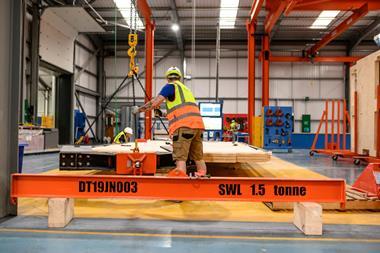There are so many downsides to the Levelling Up White Paper, where to start?

While the announcements of 20 new regeneration areas, a £1.5bn Levelling Up Home Building Fund, a Decent Homes Standard and the abolition of Section 21 ‘no fault’ evictions have been broadly welcomed by the industry, the ‘buts’ and ‘whiles’ were writ large in most responses.
Aside from the obvious “but the devil is in the detail”, we had: a “but this can only be delivered through a much bolder vision for revitalising the buildings and public spaces in our town centres” from the BPF’s Melanie Leech; a “While… , it is vital that policymakers do not lose sight of the importance of London in generating national revenue” from the Heart of London Business Alliance’s Ros Morgan; a “While… , we are very concerned that the white paper fails to address the critical housing challenge being faced by London” from Dolphin Living’s Olivia Harris; and a “However, we’d love the government to properly set out how they aim to do this – the paper has little detail on how it will simplify the planning system to make it more accessible” from VU.CITY’s Jamie Holmes.
The white paper doesn’t just lack detail, it lacks vision and ambition. Too much is conspicuous by its absence. Where is the mention of planning reform, integral to levelling up? What of climate change, now rightly top of many people’s agendas? Why is King’s Cross presented as the blueprint for regeneration… in the regions? Can’t they have their own location-appropriate plans instead of a model cut and pasted from a London scheme (a historic one-off at that)?
How richly ironic that a London scheme should be invoked in a white paper intended to benefit everywhere, pretty much, except the capital. London is not the only part of the country feeling left out. A particularly irksome aspect of the levelling-up agenda is its continued fixation on levelling up outside London and the South East, when plenty of levelling up is also needed in the South East (such as Thanet, which is one of the most deprived parts of the UK).
There were other notable ‘howevers’. One came from Pocket Living’s Marc Vlessing: “However, it is absolutely vital that we focus as much on intergenerational opportunity as geographical.” He is so right. Levelling up is as much, if not more, about redressing the imbalance between the ‘haves’, who own their own homes, and ‘have-nots’, who do not and will never be able to afford to.
Another came from Mace’s Jason Millett: “However, it is important for the long-term success of the levelling-up agenda that new funding commitments are made available, beyond those already announced.”
Also spot on. The headline figures mentioned might impress the public, but they are a drop in the ocean of what is required. They won’t make any difference if soaring costs and the ongoing paralysis of the planning system aren’t dealt with, certainly not to the SMEs critical to delivering the housing needed to level up (which will instead continue to be delivered by an ever-smaller number of large housebuilders).
Neither does the white paper propose anything detailed or meaningful enough to unleash the private sector investment needed to propel the sort of public-private partnerships that brought us triumphs like King’s Cross or could deliver the town centre regeneration integral to levelling up.
A white paper is always going to be light on detail, but this light? The 12 missions read more like 12 missed opportunities, unfortunately.
































No comments yet